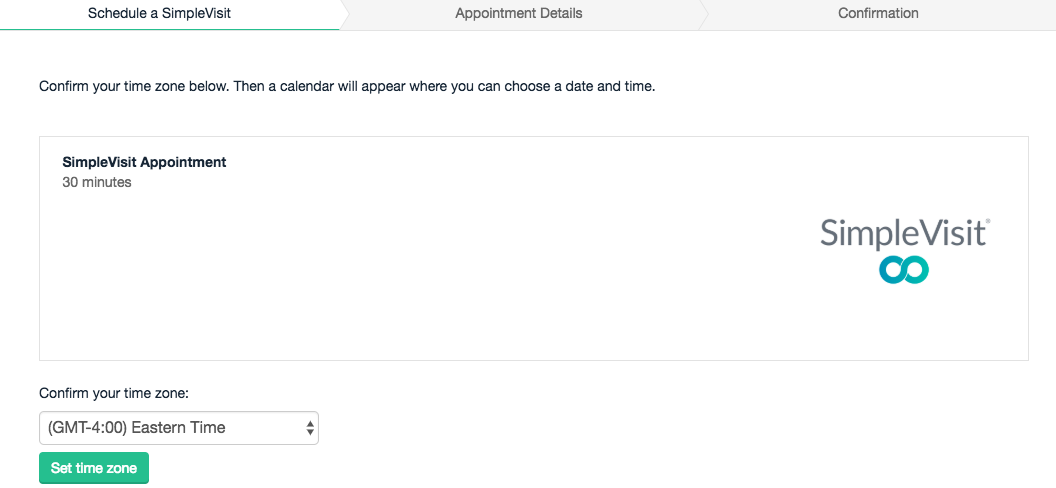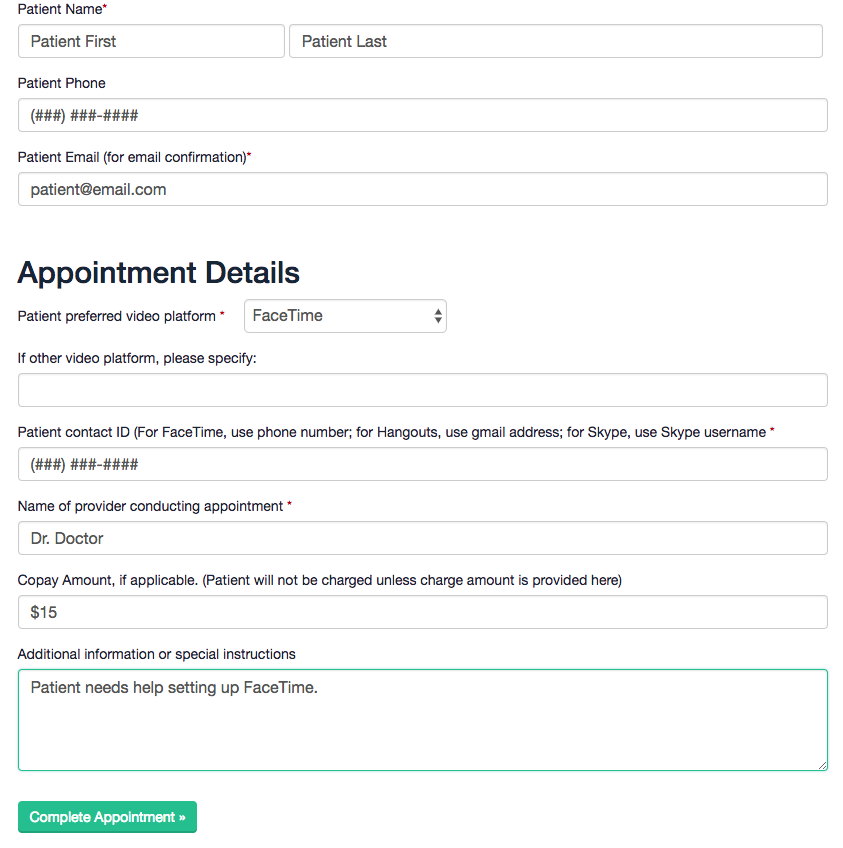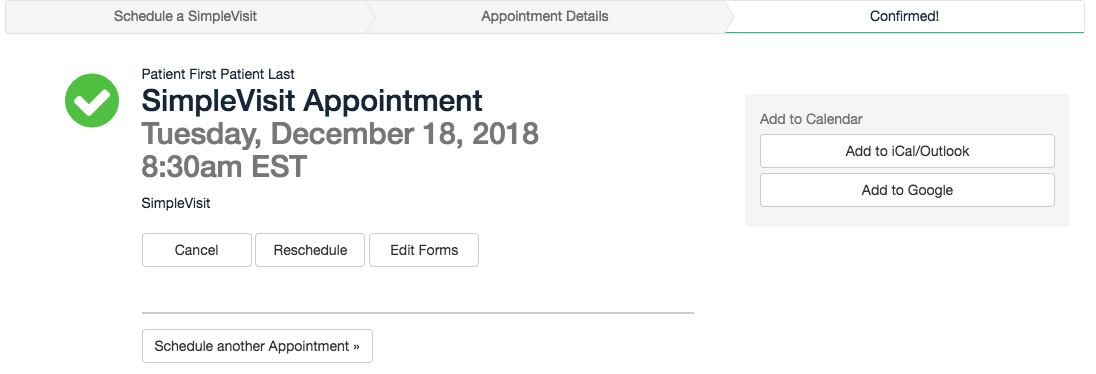
Introducing Updates to our Online Scheduling Feature
The first step is to select the time zone in which you are located. This will then launch the calendar showing the appropriate hours of operation.

From the calendar view, you can then select the date and time of your appointment. Please note that appointments are displayed in 15 minute increments. If you have an appointment time that needs to begin at a more specific time, please use the nearest option and then provide further instruction in the appointment details.

Once the appointment date and time are selected, the primary step is to relay the patient’s contact information including their preferred video application (i.e. Facetime, Skype, Hangouts). If you cannot provide this information at the time of scheduling, simply indicate that in fields provided and our team will work with you to make the connection. Please note that an appointment notification will be sent to the email address provided in the “Patient Email” field.

When you see this screen, you’ll know your appointment has been successfully scheduled! You will then be given the option to add this event into your existing calendar for reference using quick links to iCal, Outlook or Google.

And that’s it! If you would like to arrange an integration with your EMR or have questions about our online scheduling options, feel free contact us at 877.838.4748.
50-State Survey: Telerehabilitation
The Center for Connected Health Policy recently pushed out another one of their helpful 50-state policy reviews, this time on physical and occupational therapy through virtual care. Published in the fall 2018 volume of the International Journal of Telerehabilitation,...
New Jersey Receives $2.3 Million for Pediatric Mental Health Services
This past week it was announced that the federal Health Resources and Services Administration (HRSA), along with the Nicholson Foundation, awarded the New Jersey State Department of Health $2.3 million to expand access to their Pediatric Psychiatry Collective (PPC)...
Road to Reimbursement: Location
Reimbursement policies usually present more of a challenge to telemedicine adoption than technology or training. Healthcare providers have reported high interest in offering remote care for their patients but question whether it makes good business sense if they...



